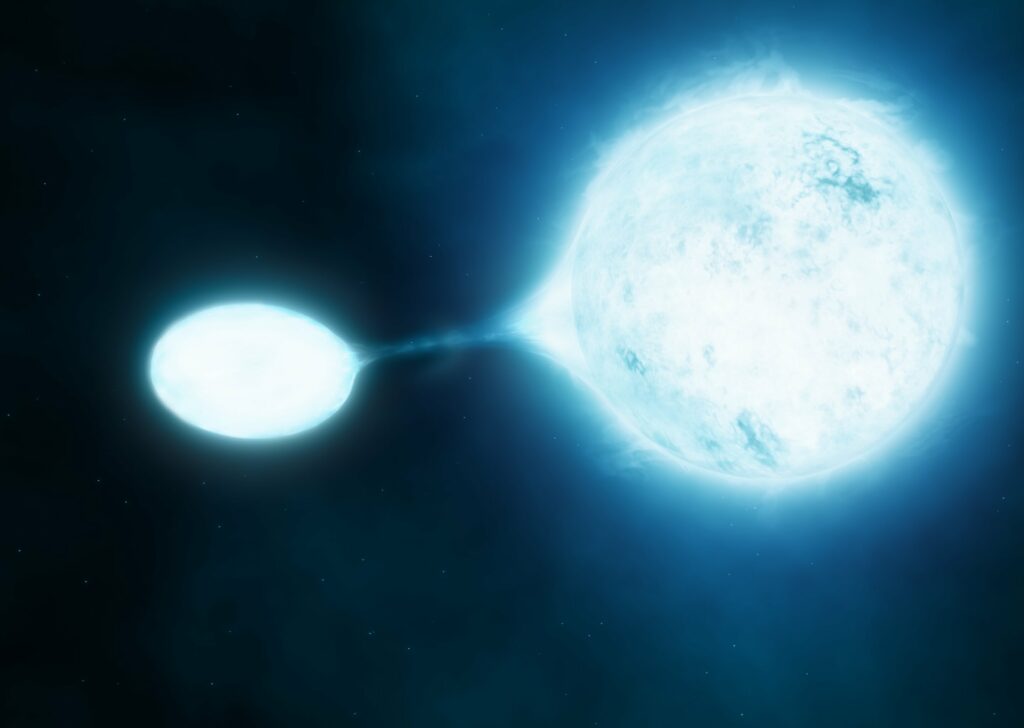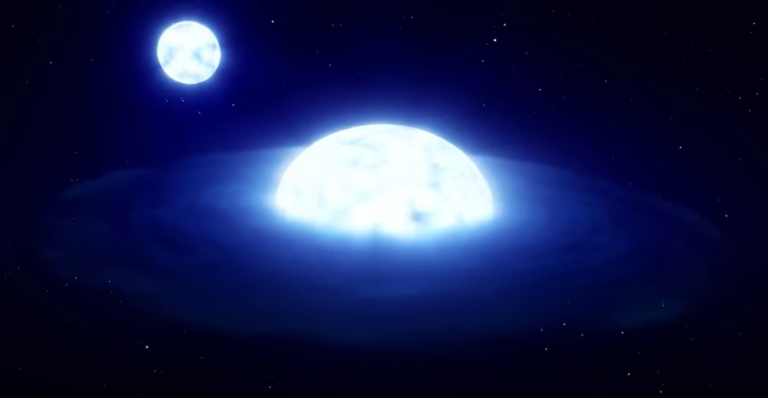Discovery of ‘Triple Star’ System Could Transform Our Understanding of Stellar Evolution
A groundbreaking discovery by scientists at the University of Leeds has the potential to revolutionize astronomers’ understanding of some of the largest and most prevalent stars in the universe. The paper titled “Gaia uncovers difference in B and Be star binarity at small scales: evidence for mass transfer causing the Be phenomenon” is featured in the Monthly Notices of the Royal Astronomical Society.
The research, conducted by Ph.D. student Jonathan Dodd and Professor René Oudmaijer from the University’s School of Physics and Astronomy, presents compelling new evidence suggesting that massive Be stars, previously believed to primarily exist in binary systems, might actually be part of “triple” star systems.
This remarkable finding has the potential to transform our comprehension of these objects—specifically a subset of B stars—which serve as a crucial “test bed” for developing broader theories on stellar evolution.
Be stars, recognized by the characteristic disk of gas surrounding them, akin to Saturn’s rings, have been known for about 150 years since their identification by renowned Italian astronomer Angelo Secchi in 1866. However, until this discovery, the formation mechanism of these stars has remained elusive.
The prevalent belief among astronomers has been that the disks are a result of the rapid rotation of Be stars, induced by their interaction with another star in a binary system.
Triple systems
Mr. Dodd, the corresponding author of the research, noted, “The best analogy for that is if you’ve watched Star Wars, there are planets where they have two suns.” However, through the analysis of data from the European Space Agency’s Gaia satellite, the researchers assert that these stars may exist within triple systems—with three bodies interacting instead of just two.
Mr. Dodd further explained, “We observed the way the stars move across the night sky, over longer periods like 10 years, and shorter periods of around six months. If a star moves in a straight line, we know there’s just one star, but if there is more than one, we will see a slight wobble or, in the best case, a spiral.
Applying this methodology to the two groups of stars under scrutiny—the B stars and the Be stars—yielded unexpected results. Mr. Dodd expressed, “What we found, confusingly, is that at first it looks like the Be stars have a lower rate of companions than the B stars. This is interesting because we’d expect them to have a higher rate.”
However, Principal Investigator Prof Oudmaijer suggested, “The fact that we do not see them might be because they are now too faint to be detected.”
Mass transfer
Subsequently, the researchers turned their attention to an alternative dataset, specifically seeking companion stars at greater distances. In this analysis, they observed a striking similarity in the rate of companion stars between the B and Be stars at these larger separations.
This led them to deduce that, in numerous instances, a third star is entering the scenario, compelling the companion to draw closer to the Be star. This proximity allows for the transfer of mass from one star to the other, giving rise to the distinctive Be star disk. Additionally, this phenomenon may elucidate the absence of these companions from detection—they have diminished in size and luminosity, becoming too minuscule to be observed after the Be star, akin to a “vampire,” has absorbed a substantial portion of their mass.

The implications of this discovery extend far beyond its immediate field, potentially reshaping various areas of astronomy, including our comprehension of black holes, neutron stars, and sources of gravitational waves.
Professor Oudmaijer emphasized, “There’s a revolution going on in physics at the moment around gravitational waves. We have only been observing these gravitational waves for a few years now, and these have been found to be due to merging black holes.”
He continued, “We know that these enigmatic objects—black holes and neutron stars—exist, but we don’t know much about the stars that would become them. Our findings provide a clue to understanding these gravitational wave sources.”
Furthermore, he added, “Over the last decade or so, astronomers have found that binarity is an incredibly important element in stellar evolution. We are now moving more towards the idea it is even more complex than that and that triple stars need to be considered.”
“Indeed,” Oudmaijer concluded, “triples have become the new binaries.”
This article is republished from PhysORG under a Creative Commons license. Read the original article.
Do not forget to share your opinion with us to provide you with the best posts !




0 Comments